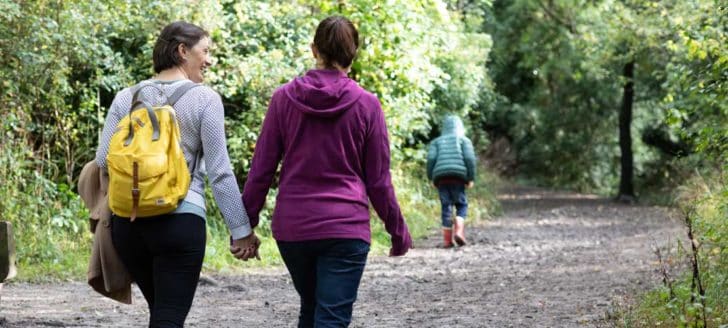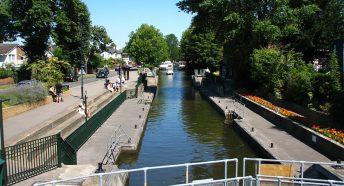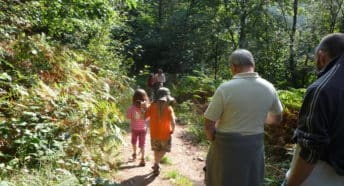A Walk in Warfield
Bracknell District Chairman Rebecca Murphy shares one of her favourite walks in Warfield.
North Bracknell Forest is blessed with an extensive network of rural footpaths. This circular route works in both directions, and from any starting point. I walk it from home, over Hayley Green crossroads and up Malt Hill.
A screen of light woodland all but hides eighteenth-century Warfield House and its parkland on the left, but once past an eyesore of a giant conifer hedge, Moat House appears on the right. A discreet glance through the gate (it’s a private residence) allows a glimpse of the remains of the medieval moat.
As I continue, otherwise unremarkable hedgerows and views through to fields shout ‘intrinsic beauty of the countryside’ at me, with bird song and humming insect accompaniment. Against the palette of greens of English spring foliage, hedges froth white with blossom for weeks and verges are a kaleidoscope of white, yellow and bright blue as species take turns to burst into flower. Later honeysuckle and wild rose bring pastel colours and delicious scents, while later still, massed berries in red, blue and purple brighten the shortening days of autumn. I joined CPRE because of past-President Bill Bryson’s impassioned defence of hedgerows in his book ‘Notes from a Small Island’. In his words, hedgerows “are a central part of what makes England England. Without them, it would just be Indiana with steeples”.
The road twists and dips down to Wane Bridge, where I take a footpath on the left (neatly avoiding a longer uphill route by road). It winds for a short way through a stately poplar copse to a wooden bridge over The Cut, where decades ago my children played ‘Pooh Sticks’ before progressing to grander bridges. Crossing the fields to St Michael’s, I enjoy the sight of the lovely Grade II* listed church in its timeless rural setting. Taking the footpath opposite, to the right of the car park and churchyard, I turn left down the zigzag concrete path between fields of barley (in a good year) or oilseed rape (farmers, forgive me) and up to the car park for Frost Folly ‘SANG’ (Suitable Alternative Natural Greenspace – a local authority designation, popular with dog walkers).
Sadly but only too commonly, nearby Green Belt is under threat of development, so it’s a case of enjoy it and fight to preserve it. Enjoying it includes listening for larks (easy) and spotting them in the sky (not easy). Then I head left down Weller’s Lane, which in autumn drips with blackberries—I’m usually flagging by now so slowed progress is helpful.
I turn left into Westhatch Lane, where a large ditch puts paid to blackberrying for the nonathletic, and left again on reaching Church Lane. Shortly after, I take a footpath on the right through woodland, over The Cut and Bull Brook close to where they converge, and across a wide meadow, beautiful in high summer when the ripening grass ripples in the breeze. The footpath dips back into woodland, almost impassably muddy here in a wet winter, leading to Gibbins Lane and Warfield Street.
I go left through the village, seeing its history in its houses: from timber-framed Knibbs Knook to a contemporary mews development on the site of the old bakery. Beyond the village, I turn up Bracknell Road under a magnificent horse chestnut that heralds summer’s start each year “full of candles alight in the park” (Shirley Hughes: ‘Out and About’). I pass the gates of Warfield House and, as the giant old oaks that frame Hayley Green crossroads appear ahead, happily anticipate home and a large cup of tea.








